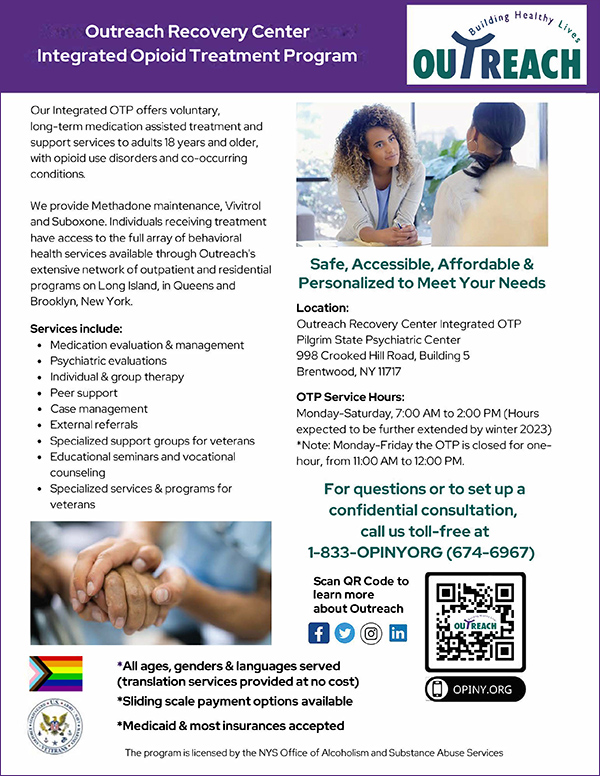Nature versus nurture has plagued our educational and sociological philosophy for decades in social service and the mental health field. The idea behind treating addiction as a “family disease” has long been established in the understanding that there is a genetic component to addiction and that it can be traced from generation to generation, seemingly handed down through the bloodline. Research widely shows there to be a genetic piece to addiction and that if one were to have biological family members who have dealt with addiction,1 it is very likely that they may also struggle with symptoms. These could include poor impulse control and behavioral symptomology resulting in self-medicating as well as a higher likelihood that one will be exposed to addictive substances at a younger age. Therefore, individuals in families with a history of addiction may have more opportunity to develop maladaptive coping skills resulting in substance use, which could impact the occurrence of addiction or addictive behaviors over the lifespan. Conversely, there are arguments that those same components listed above could be introduced from a “nurture” perspective. If a person is born into this, no matter their genetic make-up, this same symptomology or behavior set could be seen in them, simply because of their surroundings.

However, a greater reasoning could be made that these arguments do not matter once a person is suffering from addiction. What matters is how we can help when a loved one is seeking treatment. And the hard truth is that we may only see a successful outcome when the entire family system is treated. It may not matter if the symptoms of addiction come from a nature or nurture component but rather what we as providers do with the symptoms stemming from a family or home life that could impact someone to seek treatment and find success in recovery. It is the duty of those treating these individuals to treat the entirety of the client. To help us identify what comes next for the individual and those that love and care for them, we must fully consider their family relations, their day-to-day environments (home, work, social situations), past trauma and their genetics.
A deeper dive into the family system is necessary to truly understand what motivates someone to misuse substances, and to help us develop an effective treatment plan for them. It can be said that one of the most important pieces of substance use treatment is involving the entire support system in the therapeutic process. This can often help to identify more areas of support needed, and/or the role others play in the development of their symptoms and behaviors. Long gone are the days of the “identified patient.” What we are seeing now is an increase in symptoms existing through an entire support system rather than just in one person, who the system would normally point their fingers at.
The assumption and hope are that the family wants the “identified patient” to heal and improve. However, the problem becomes when the support system is broken at the foundation. Are they able to move forward without having the “problem child?” What happens when the “problem” begins to heal? What happens when those in the support system do not take responsibility for their role in what has developed? What happens when the support system does not want to accept or recognize the problem because of the stigma associated with addiction or mental health? What happens when the support system no longer knows how to understand, communicate with, or support the healing individual?
Even with all these barriers and conflicts, there is still a pathway to healing and hope for those seeking recovery for their loved ones.
For a very long time, seeking treatment for substance use disorders looked very lonely, and at times filled with shame. Many people seeking treatment and their loved ones have tried to hide the fact that they are seeking help, because that means admitting there was something wrong. This does not have to be the case.
Currently at Outreach, we are working with OASAS on the EQuITY Grant, which participates in the SAMHSA TREE grant. This grant, and our efforts, focus on outcomes associated with transitional aged youth (TAY) individuals, ages 18 to 25 years old. We are expanding and training clinical staff on Evidence-Based Practices (EBPs) utilized with the individuals we treat, both TAY and beyond, and the idea or assumed result is simple. If we introduce EBPs into treatment at an early enough age and make a concentrated effort to pull in families along with treatment, will we be able to improve outcomes over the lifetime? We have identified Enhanced Cognitive Behavioral Therapy, Community Reinforcement and Family Training (CRAFT) and Multidimensional Family Therapy (MDFT) as the main avenues to achieving this result for the time being. Though the principle is simple and hopeful, the execution can be complicated.
As treatment providers it is our role to provide a safe space for our clients and to get them through the door so that we can bring skills to treatment that they will engage in. Introducing new EBPs, such as those described above, aims to bring family members into a client’s treatment as well. The hope is that we can help them understand their role in both the addiction and the recovery process. Many family members or significant others do not understand their subconsciously unhealthy role in the codependent relationships that have formed over many years with their loved one. At times, these habits can be the hardest to break for both the client and their loved ones. Learning that “No” can be a complete sentence can be gut wrenching for some. But others may need even more, such as basic education on communication principles. Understanding that with recovery can come freedom, trust, growth, and evolution in relationships, or, at times, it may come with recurrence or having to set new boundaries. Further, providing a safe space for their loved one to heal is crucial. These are all things that family and significant others in treatment can provide.
Engaging in family centered treatments improves outcomes in perceived client achievements such as gaining employment or compliance with legal mandates, improved retention in treatment, improved familial relationships and parenting skills.2 It has shown to improve communication, consequential thinking, and creates goals that everyone involved can align with. It improves access to treatment for others in the community, even if by word of mouth. “If it helps me, maybe it will help you.” It improves the presence of hope, and that growth and change are possible.
Significant other treatment and family therapies can be essential to a healing support system to learn how to be a healed unit rather than a broken one. If one member of the broken unit looks to heal without the rest following, it is very likely that the foundation will be difficult to build on. And, at the same time, significant others should remember that acceptance does not have to mean approval. If a loved one participates in the therapeutic process, it does not have to mean that they completely move on from all that has happened. It just means that it might be time for them to take on their own healing as well.
The underlying principle is that recovery is possible for individuals and families, and hope is still alive. Recovery is something to be proud of and grateful for. Recovery deserves to be celebrated by the recovered, their community and loved ones.
Megan Ryan, LMHC, is Site Director, at Outreach’s Bellport Outpatient Clinic located in Bellport, NY. For more information, visit www.opiny.org, email meganryan@opiny.org call (631) 286-0700.
References
- See online, NIH study, Multivariate genome-wide association meta-analysis of over 1 million subjects identifies loci underlying multiple substance use disorders, published by Nature Mental Health (March 22, 2023): https://www.nature.com/articles/s44220-023-00034-y.
- Please see online from NCSACW, SAMSHA, CB, ACFY and HSS (2023), Implementing a Family-Centered Approach Series: https://ncsacw.acf.hhs.gov/topics/family-centered-approach/fca-modules-series/.






